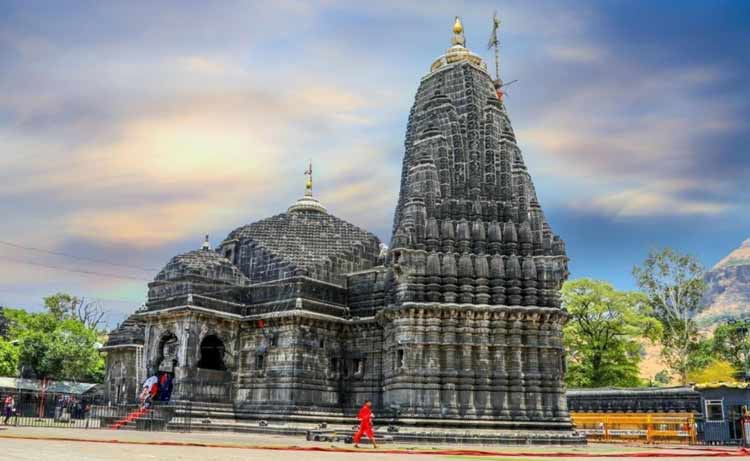Best Time to Visit Jyotirlinga in Maharashtra
Date: 21 November 2023

One of the most popular travel destinations in India is Maharashtra. The state is bordered by Gujarat, Madhya Pradesh, Chhattisgarh, Karnataka, Andhra Pradesh, and Goa and is situated in the western portion of the nation. This has led to the development of several internationally renowned tourism destinations in Maharashtra.
What is the best time to visit Jyotirlinga in Maharashtra
The majority of the state's cities have attractions that draw many tourists from India and other countries. Although you can schedule your trip to Maharashtra at any time of year, October through March is the ideal time to go there. The area enjoys great winter weather, which makes it comfortable to explore the unusual attractions. In the winter, the average temperature in the area stays between 12 and 25 degrees Celsius.
Seasons in Maharashtra to Visit Jyotirlinga
Winter (October to March)
The greatest time to arrange a trip to Maharashtra is during the winter. Throughout the winter, the temperature ranges from 12 to 34 degrees Celsius. Every visitor feels good about the site because of its lovely atmosphere. You may visit UNESCO monuments like the Elephanta Caves and Ajanta Ellora. Visit Tarkarli Beach as well, which is among India's top snorkelling locations. The state's major winter travel destinations include Mumbai, Pune, Nashik, Nagpur, and Ahmednagar.
Wintertime averages in Maharashtra range from 12°C to 34°C.
Summer (April to June)
Even though Maharashtra has extremely hot summers, the unexpected downpour provides reprieve from the intense heat of the sun. During the summer, the temperature ranges from 22 to 42 degrees Celsius. You can visit the area's stunning hill stations, such as Malshej Ghat, Bhandardara, and Mahabaleshwar.
Maharashtra's summertime average temperature ranges from 22 to 42°C.
Monsoon (July to September)
The state experiences monsoons towards the end of June. The months of July and August bring in the most rainfall for the state. Monsoon season is a great time to explore hill stations like Lonavala, Mahabaleshwar, Chikhaldara, and Toranmal, yet it is not the best time to visit Maharashtra. Maharashtra's rainy season is ideal for tourism since it allows you to take in the area's abundant flora, which only appears during the monsoon.
List of jyotirlingas in Maharashtra
Maharashtra is endowed with an abundance of Jyotirlingas, or temples devoted to Lord Shiva. Parli Vaijnath, Bhimashankar, Trimbakeshwar, Grishneshwar, and Aundha Nagnath. The collective term for these five jyotirlingas in Maharashtra is Pancha Jyotirlingas.
1. Trimbakeshwar, Nashik
Trimbakeshwar, one of the twelve Jyotirlingas, is the holiest location in Maharashtra. The three faces of the three Gods—Lord Shiva, Lord Vishnu, and Lord Brahma—that make up this jyotirlinga's distinctive feature. Visitors from all over the world gather here for Mahakumbh every 12 years, as it is believed that people who attend Trimbakeshwar would find redemption.
2. Bhimashankar Jyotirlinga, Pune
In Maharashtra, the Bhimashankar Temple is situated in Khed Taluka, 127 kilometres from Pune. Situated close to the well-liked hiking destination of Karjat, Bhimashankar is well-known for housing one of the twelve Jyotirlingas. In this temple, the name of Lord Shiva is "Ardhanareeshwara." You should allow one to two hours for Darshan, as there are roughly 230 steps. The source of the Bhima River is Bhimashankar.
3. Grishneshwar, Aurangabad
The Grishneshwar Temple, dedicated to Lord Shiva, is situated around 35 kilometres from Aurangabad, Maharashtra, next to the Ellora Caves. Constructed in the 13th century, the temple underwent multiple destructions and reconstructions during the Mughal era, until it was finally restored in the 18th century. In addition to being a jyotirlinga, the temple is now well-known as a major tourist destination in Maharashtra, particularly for visitors to the Ellora Caves. It is required for women to wear a saree and for males to wear a dhoti in order to perform Abhishek in the temple.
4. Parali Vaijanath, Beed
Located in Maharashtra's Beed district, Parli Vaijanath Jyotirlinga is well known for its temple. The temple is situated between 75 and 80 feet above the earth. The Vaijanath temple is thought to be constructed entirely of one stone on a little hill. Throughout the year, a sizable number of worshippers flock to the temple perched on a little hill. A thermal power plant is another reason Parali is well-known.
The city of Parali is endowed with a therapeutic aura. Vaidhyanath is the name given to Parali Jyotirlinga because of its therapeutic atmosphere. Touching the Shiva Lingas is permitted for devotees, and this has numerous health benefits.
5. Aundha Nagnath Temple, Hingoli
The fifth Jyotirlinga in Maharashtra is Aundha Nagnath. The historic Shiva temple known as Aundha Nagnath Jyotirlinga is located in the Maharashtra district of Hingoli near Aundha Nagnath. During his fourteen-year exile, Yudhisthira, the eldest Pandava, constructed this shrine.
FAQ’s About Best time to visit jyotirlinga in Maharashtra
Q1. Which month in Maharashtra is the coldest?
The answer is that January is the coldest month in Maharashtra, with highs of about 28°C during the day and lows of about 12°C at night.
Q2. Which month in Maharashtra is the start of the rainy season?
The months of June to September are the wettest in Maharashtra, a time when the state is enveloped in a thick layer of greenery and foggy skies.
Q3. When is the ideal time to visit Jyotirlinga in Maharashtra?
Yes. Between November and February, when the weather is nice and you can easily seek blessings, visit the Maharashtra Jyotirlinga.
Q4. In Maharashtra, which city has the nicest weather?
The greatest locations in Maharashtra for the nicest weather are Pune, Lonavala, Mahabaleshwar, Matheran, Khandala, Panchgani, Amboli, etc.
Q5. Which city is superior, Pune or Mumbai?
Yes, Mumbai is a more glamorous city than Pune and is known as the "Bollywood Capital." However, Pune is unmatched in terms of nightlife and music.

